- Budget spent: £3,236
- Status: Implemented
Freshwater Pearl Mussels are members of molluscs, a group of animals that contain more species than all birds, mammals, reptiles, amphibians and fishes combined. With such a significant biomass, they play an important role in a functioning ecosystem by filtering the water. They are also used as a ‘bioindicator’ species to monitor the health of aquatic environments. The sharp global decline of nonmarine molluscs over the last decade is therefore raising concern, particularly freshwater pearl mussels, the most endangered species. This project aims to detect the presence or absence of freshwater pearl mussels from two potentially suitable habitats in Scotland.
The Intervention
This project is being carried out in partnership with Inverness College University of Highlands and Islands (UHI Inverness) to collect eDNA samples from 6 sites within Alladale Wilderness Reserve on the rivers Abhainn a' Glinne Mhoir and Alladale.
The eDNA samples will then be analysed using a novel methodology, custom made to detect pearl mussels. This methodology allows a high enough sensitivity to potentially detect less than 100 mussels up to 10km from the sampling locations. This will give us a confident indication of any low concentrations of eDNA that could appear.
The results of the survey will help inform our understanding of the distribution of this species in Scotland. If the survey confirms the presence of mussels in these rivers, we would then need to investigate further to identify the exact location, size and distribution, and the health and any threats they may face.
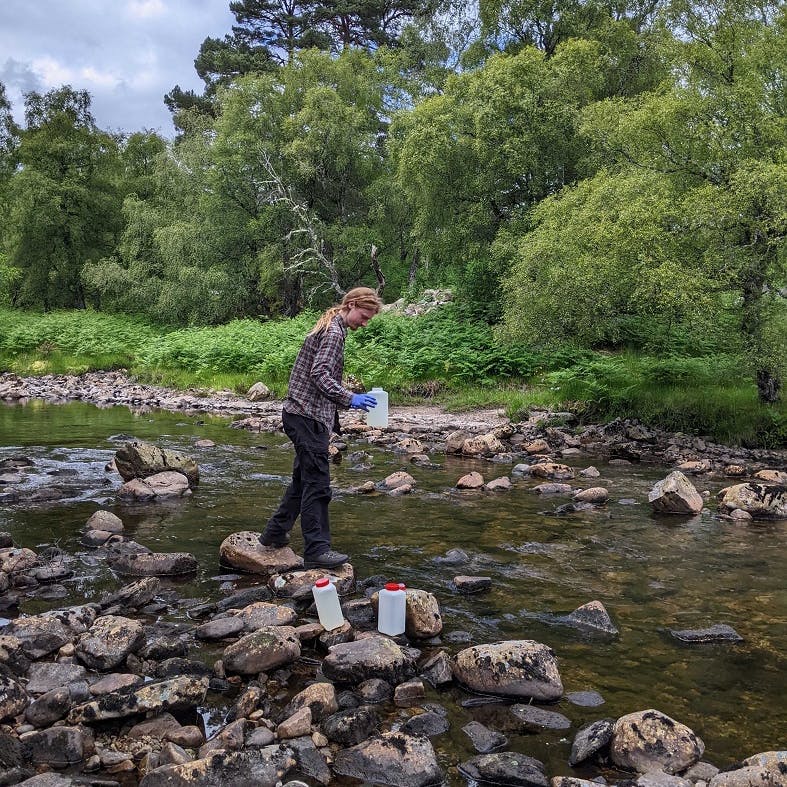
Learn More About the Context Behind this Project
Why are Freshwater Pearl Mussels important?
Freshwater mussels (Margaritifera margaritifera) are large filter-feeding bivalves which can clean the water supporting other aquatic and terrestrial organisms and species. One individual adult can filter up to 50 litres of water a day! The sheer original volume of this species means they can have a great impact on the following ecological processes: particle processing, nutrient release, and sediment mixing.
Freshwater pearl mussels have a particularly important relationship with salmonoid fish, such as salmon. They help keep rivers clean, which benefits wildlife such as salmon. At the same time, salmon benefit freshwater pearl mussels. The glochidia (young) of freshwater pearl mussels attach to the gills of juvenile fish until they are ready to settle into the river bed and grow into adult mussels.
Given the importance of freshwater pearl mussels, there is a shortage of knowledge about their complex biology, and the processes connected to their plummeting levels of abundance.
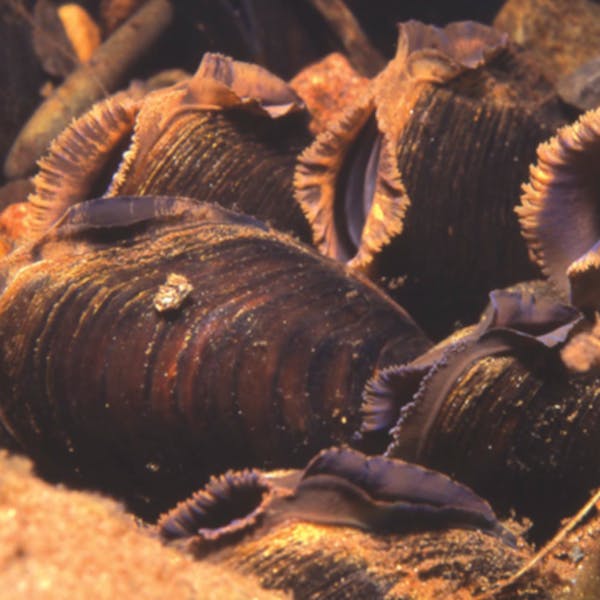
The Threats
Threats to pearl mussels are attributed to:
- illegal poaching for pearls;
- the effects of climate change such as altering temperatures and rainfall patterns;
- declines in salmonid fish, which they use as hosts for their larvae;
- changes in watercourses;
- pollution and;
- eutrophication (excessive nutrients in the water usually a resulting from run-off from land).
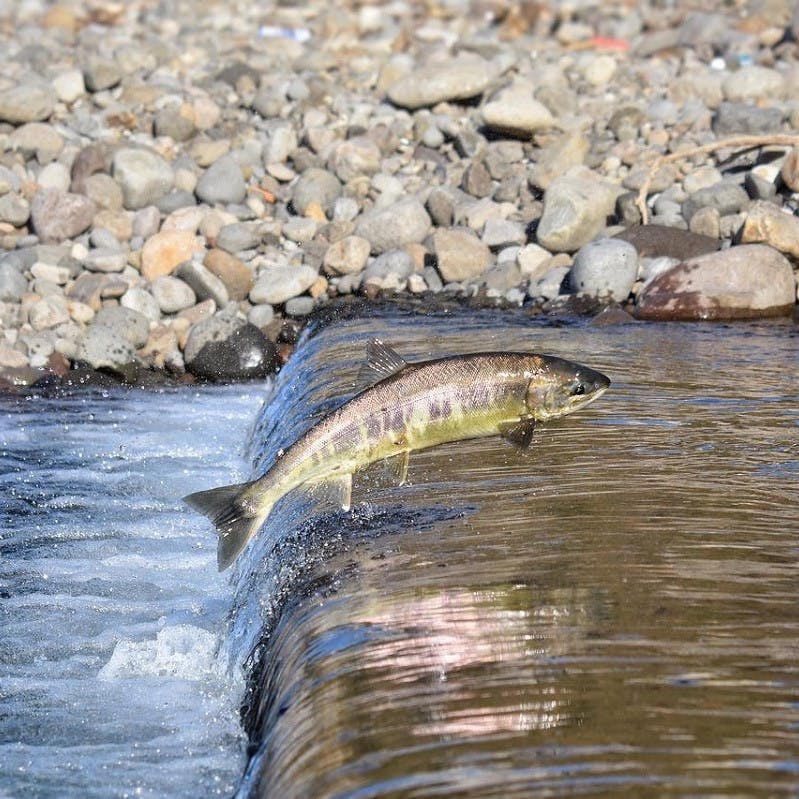
The Situation at Alladale
The rivers chosen for this survey host salmonid fish and have other suitable habitable conditions such as being naturally oligotrophic (well-oxygenated). Despite there being areas of acceptable habitat in Alladale reserve, as well as records of mussels existing in neighbouring catchment areas, until now there has been no confirmed reports of their presence.
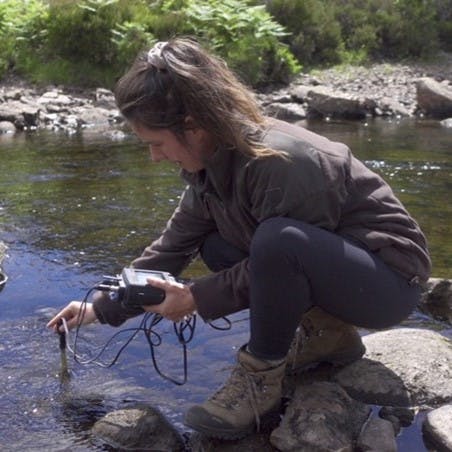
The value of eDNA
Traditional surveys for freshwater pearl mussels are undertaken by hand, using a glass bottomed viewing bucket, by a licensed, trained individual. This process is labour intensive, time consuming, expensive and can be disruptive, and does not guarantee that individuals will be found, even if they are present in the river, given how inconspicuous the species.
Environmental DNA from water samples is increasingly used to detect the presence and distribution of species in aquatic ecosystems. eDNA is released from an organism into the environment in the form of shed skin, mucous, gametes and hair. This means it's possible to detect the presence of a species, without having to detect the species itself.
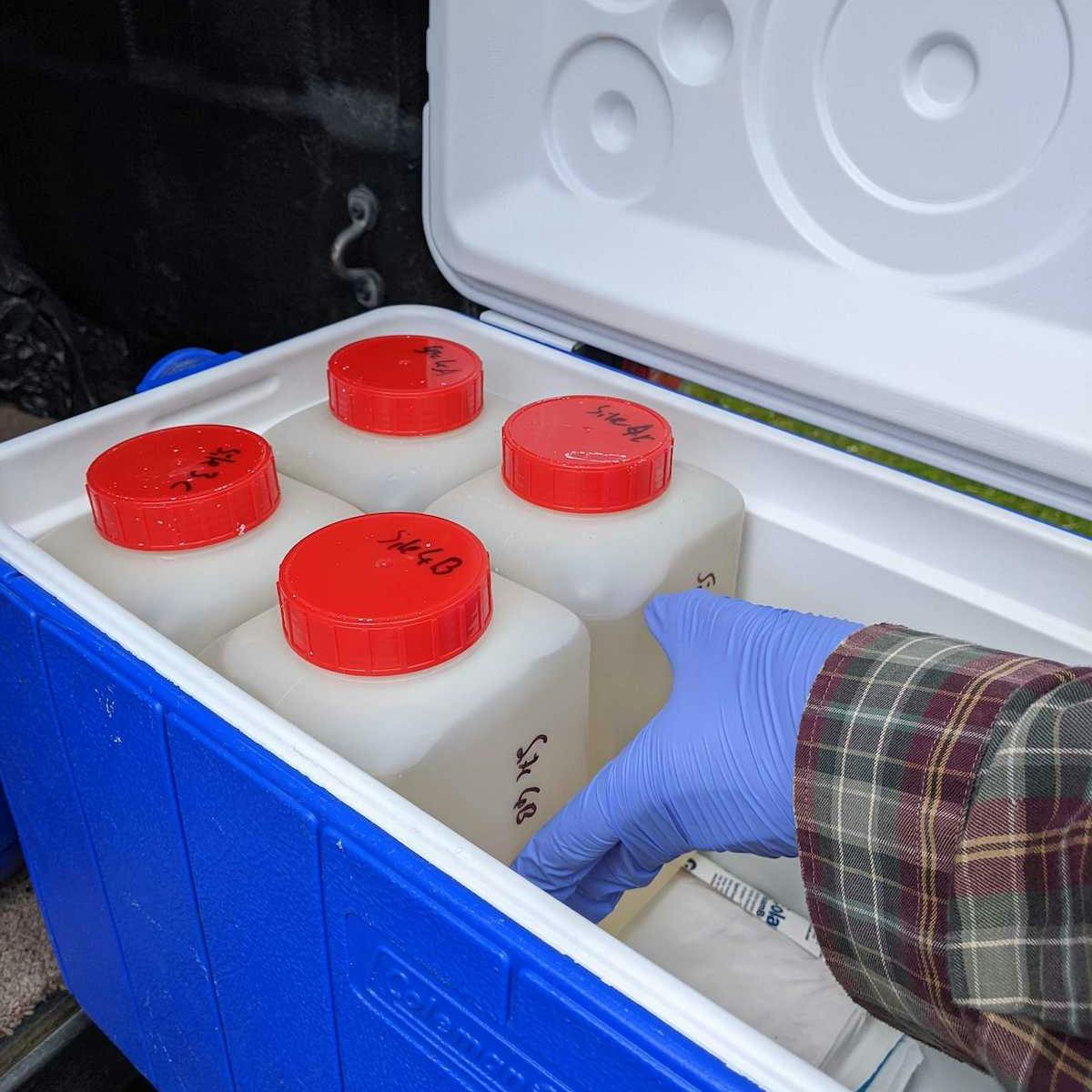
The Results
Unfortunately, the results were negative indicating that there is a strong possibility mussels aren't present in these rivers. We can come to this conclusion given the lack of records of mussel sightings, the low density of suitable habitat in the reserve, and negative eDNA results at all survey sites.
What’s next?
Although this comes as a disappointment to us, the data collected nevertheless helps to improve our understanding of the distribution of this rare and threatened species in Scotland.
This survey also represents the first time a novel methodology, custom made for sensitive single species eDNA detection of pearl mussels recently developed at Inverness Collect University Highland and Islands, is being used to help detect the presence of pearl mussels. Regardless of the specific results, it helps to showcase the value of this new methodology for providing robust and reliable evidence of the presence or absence of pearl mussels to hopefully inspire further surveys across Scotland
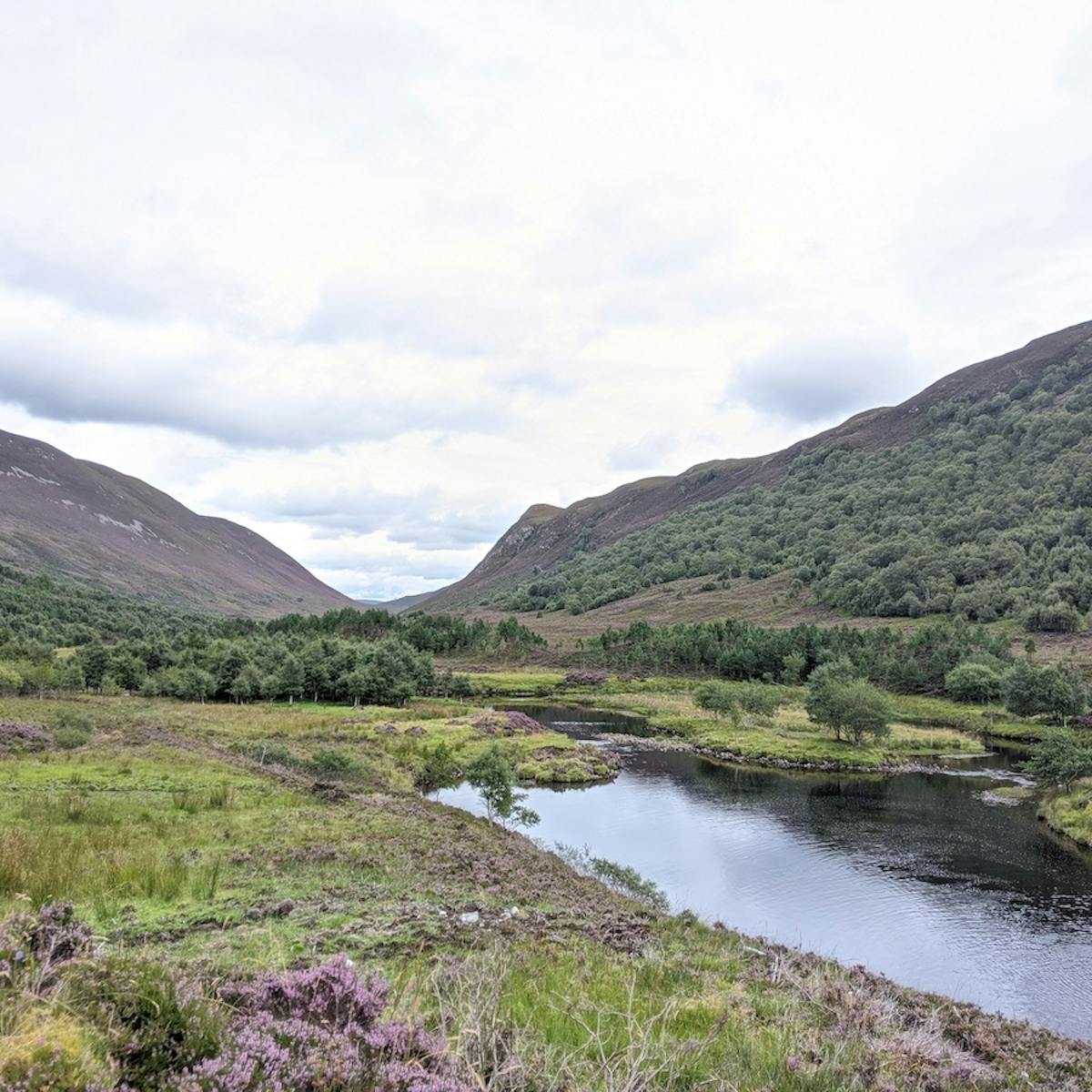
the team behind the project

Hannah, Conservation Biologist at Mossy Earth
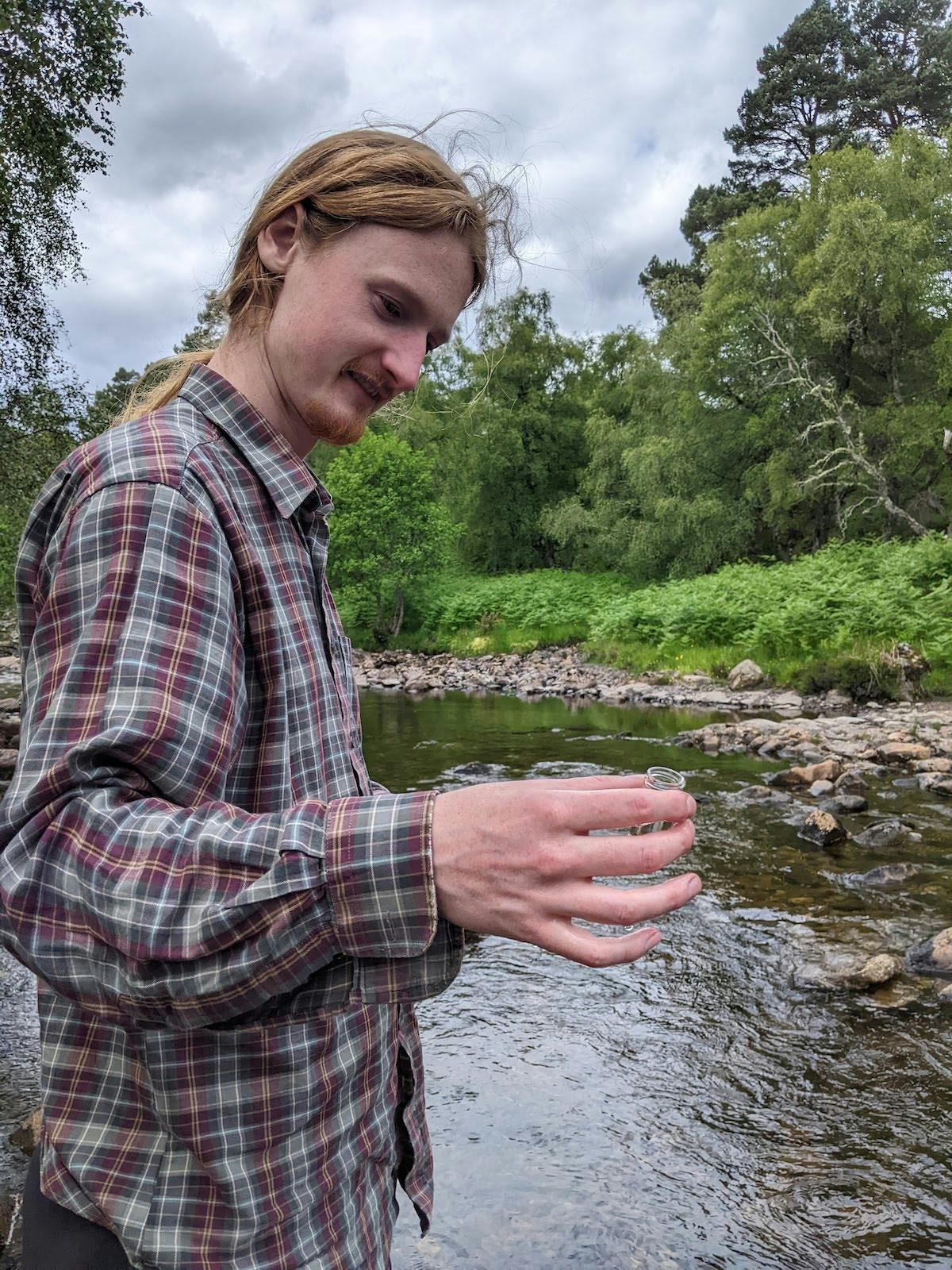
Sam Jones, Researcher at UHI Inverness
Sources & further reading

- “Strategies for the conservation of endangered freshwater pearl mussels (Margaritifera margaritifera L.): a synthesis of Conservation Genetics and Ecology” - Geist, J.